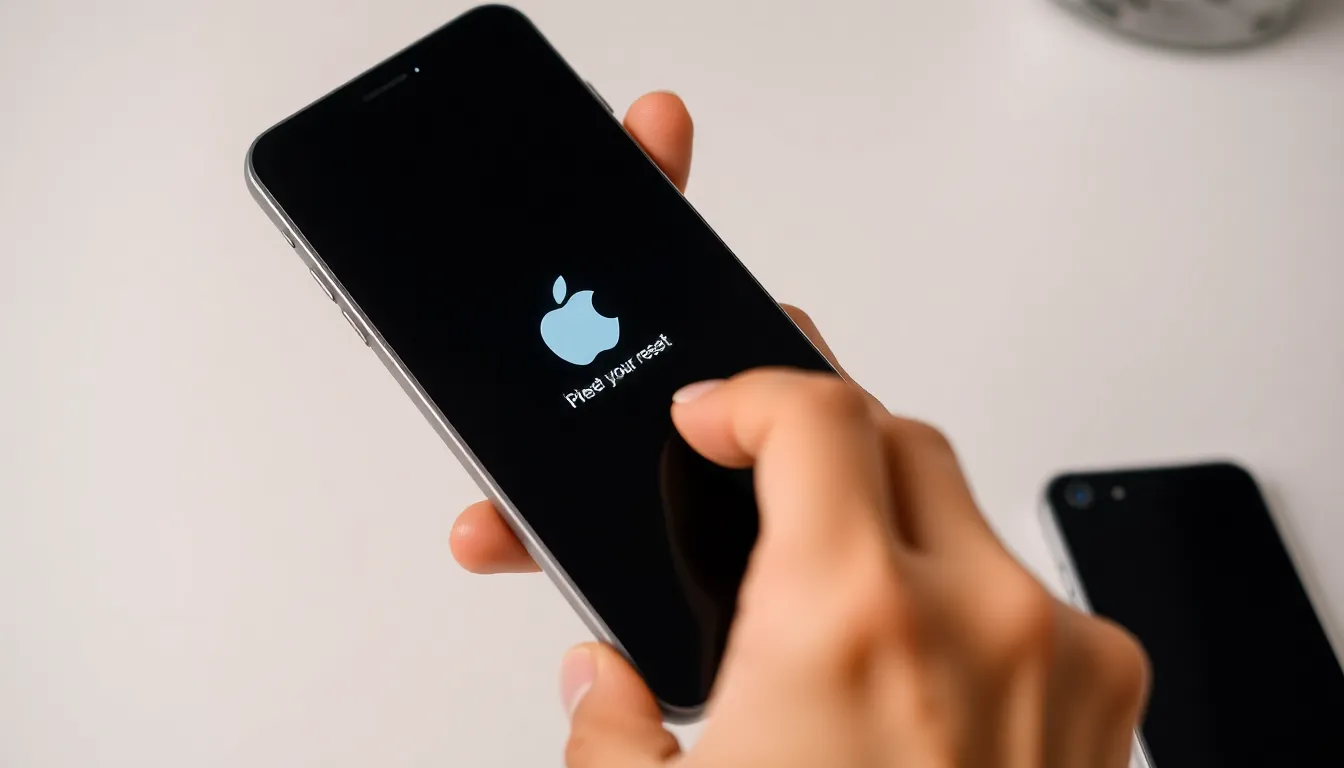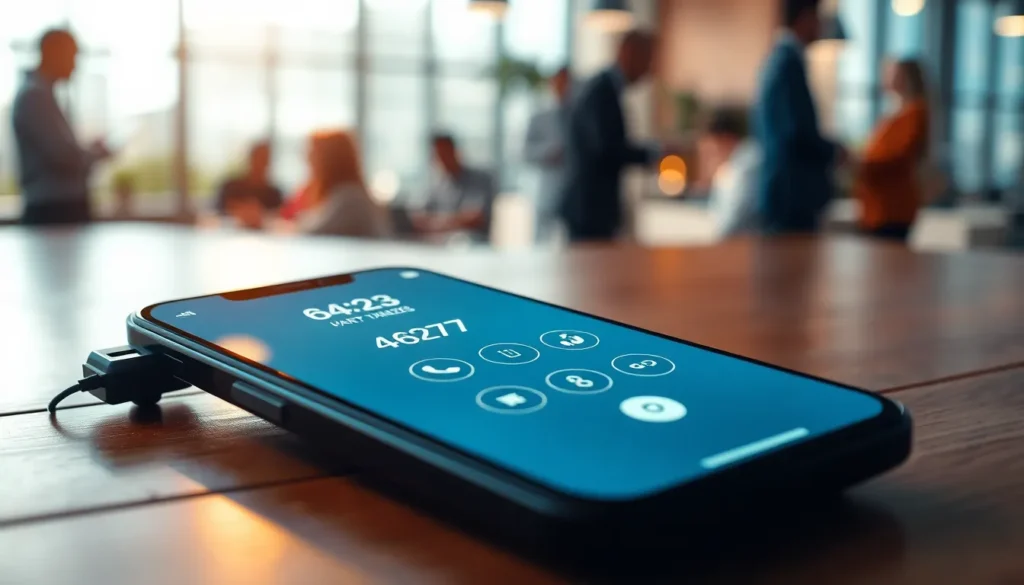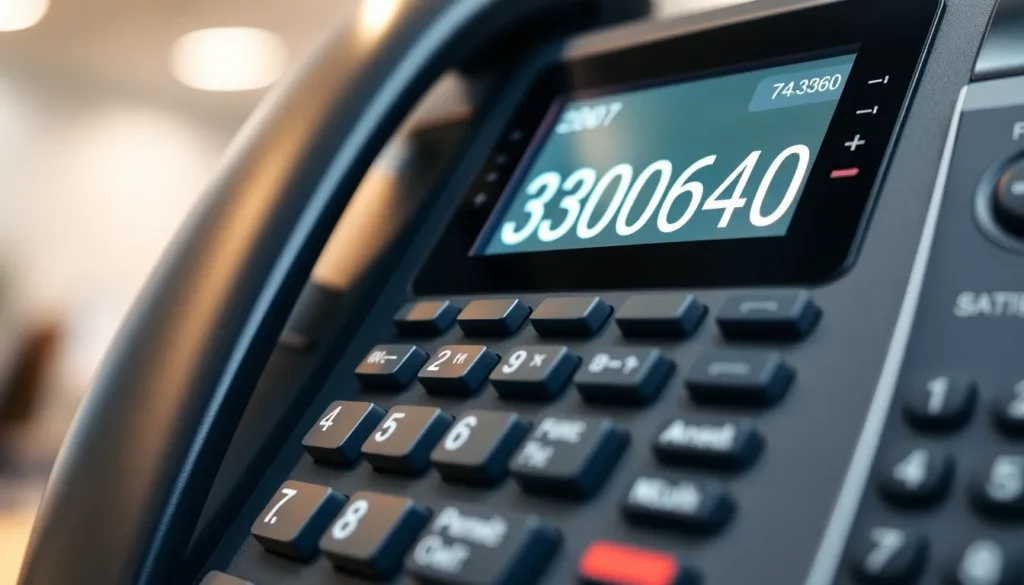Is your iPhone 7 acting like a drama queen? Maybe it’s time for a little reset magic. Whether it’s freezing up or just refusing to cooperate, sometimes a fresh start is all it needs. Resetting your device can clear out the digital cobwebs and breathe new life into it.
Table of Contents
ToggleUnderstanding iPhone Reset
Resetting an iPhone 7 can resolve performance issues, such as freezing or unresponsiveness. It’s essential to know the types of resets available and when to initiate them.
Types of Resets
Two primary reset options exist for the iPhone 7: soft reset and hard reset. A soft reset involves simply powering off and then restarting the device. This action clears temporary glitches without affecting data. A hard reset, also known as a factory reset, erases all data, returning the iPhone to its original settings. Users access this option in Settings, selecting “Erase All Content and Settings.” A reset can also involve resetting specific settings, like network or keyboard preferences, allowing troubleshooting without full data loss.
When to Reset Your iPhone 7
Timing is crucial when considering a reset. Reset after experiencing significant lag, frequent crashes, or unresponsive apps. An upcoming software update might also necessitate a reset for compatibility. A reset serves well before selling the device or passing it on. Observe device behavior; if issues persist after troubleshooting methods, such as closing apps or clearing storage, a reset might be the next step.
How to Reset a iPhone 7

Resetting an iPhone 7 can resolve various issues like freezing or unresponsiveness. The process includes multiple types of resets, tailored to different needs.
Soft Reset
A soft reset serves as a quick fix for minor glitches. To perform one on an iPhone 7, press and hold the Sleep/Wake button alongside the Volume Down button until the Apple logo appears on the screen. This method doesn’t erase any data. Instead, it refreshes the device memory, potentially correcting temporary issues. Users can initiate a soft reset anytime their device shows sluggish performance or unresponsiveness.
Hard Reset
A hard reset is useful for more persistent problems. To execute a hard reset on an iPhone 7, press the Volume Up button, then the Volume Down button, followed by pressing and holding the Sleep/Wake button until the Apple logo displays. This action helps fix larger system errors without affecting stored data. It’s particularly effective for unresponsive apps or when the device fails to power down normally.
Factory Reset
A factory reset restores the iPhone 7 to its original settings, erasing all data. Before proceeding, backing up important information is crucial since this action deletes everything on the device. To perform a factory reset, navigate to Settings, select General, then tap Reset and choose Erase All Content and Settings. This option is recommended when selling the device or troubleshooting severe software issues.
Preparing for the Reset
Preparing for a reset of the iPhone 7 is a crucial step to ensure that data remains intact when needed. Proper measures can prevent potential loss of important information during the process.
Backing Up Your Data
Backing up data protects personal information before performing a reset. iCloud offers a seamless backup solution; users can enable iCloud Backup in Settings, ensuring files store safely. Alternatively, utilizing iTunes allows data transfer via a computer. Connecting the iPhone 7 to a Mac or PC, launching iTunes, and selecting the device initiates the backup process. Both methods enable users to save contacts, photos, and app data effortlessly. Creating a backup guarantees peace of mind when resetting the device.
Ensuring Battery Life
Ensuring the iPhone 7’s battery life remains sufficient minimizes interruptions during the reset. Maintaining at least a 50% charge is advisable, as low power can create complications. If necessary, users should charge the device before starting the process. Using a reliable charger enhances battery health, allowing the reset to proceed smoothly. It’s prudent to eliminate any ongoing tasks, such as app updates or downloads, for optimal performance during the reset. Prioritizing battery life contributes to a successful reset experience.
Post-Reset Steps
After resetting the iPhone 7, certain steps require attention to restore functionality and retrieve personal data.
Restoring Data
Restoring data from a backup is essential for regaining access to important files. Users can restore apps, photos, and settings via iCloud or iTunes. Backing up prior to resetting enhances the ease of this process. To initiate, users need to sign in to their Apple ID and select the backup they wish to use. After confirming the restoration, the iPhone will begin downloading previously saved data. It’s vital to connect to Wi-Fi to prevent interruptions. This ensures a smooth restoration experience and retrieves everything saved before the reset.
Setting Up Your iPhone 7
Setting up the iPhone 7 after a reset involves several key steps. First, users should follow on-screen prompts to select their language and region. Next, connecting to Wi-Fi allows them to activate the device. Apple ID prompts follow, offering users access to their purchased content and iCloud services. Users can opt to restore from backup during this process if needed. Configuring settings, such as Touch ID or Face ID, comes next for security purposes. Finally, users can personalize features and preferences to tailor their experience, optimizing how the iPhone serves their daily needs.
Resetting an iPhone 7 can be a straightforward solution to various issues. By understanding the different reset options available users can effectively address problems like freezing or unresponsiveness. Preparing for a reset is crucial to safeguard important data and ensure a smooth process.
After completing the reset users should follow the necessary steps to restore their data and personalize their device. This not only enhances the iPhone’s performance but also provides a more enjoyable user experience. With the right approach resetting an iPhone 7 can breathe new life into the device and improve its functionality.






